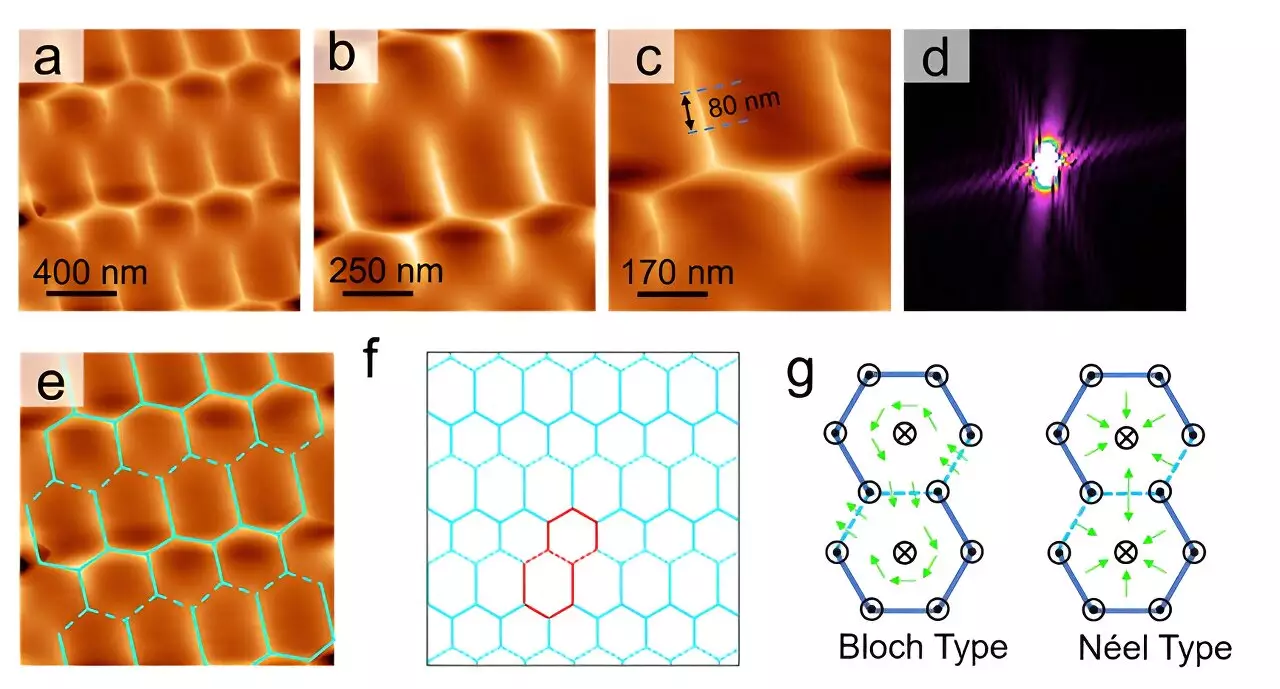Recent advancements in condensed matter physics have shed light on the magnetic properties of kagome lattices, a unique arrangement of atoms that has garnered significant interest due to its extraordinary electronic behaviors. Characterized by distinct features, such as Dirac points and flat bands, kagome lattices are vital for studying phenomena like topological magnetism and unconventional superconductivity. As researchers delve deeper into these intricate structures, the implications for areas such as quantum computing and novel superconducting materials become increasingly apparent.
A pioneering study conducted by a joint research team in China made waves when it observed intrinsic magnetic structures in a kagome lattice for the first time. Utilizing advanced techniques, including magnetic force microscopy (MFM) and electron paramagnetic resonance spectroscopy at the Steady High Magnetic Field Facility (SHMFF), the researchers have opened new frontiers in understanding the underlying mechanisms of these lattices. This significant work led by Prof. Lu Qingyou from the Hefei Institutes of Physical Science, in collaboration with Prof. Xiong Yimin of Anhui University, demonstrates the potential of these materials to reshape future technological applications.
The focus of this investigation was the binary kagome compound Fe3Sn2, where an unexpected magnetic array formation revealed a broken hexagonal structure. This unique structure emerged from the interplay between the inherent symmetry of the hexagonal lattice and uniaxial magnetic anisotropy. The researchers employed Hall transport measurements, which corroborated the existence of topologically broken spin configurations, thus challenging conventional beliefs regarding the nature of magnetic phases in these materials.
One of the most remarkable findings was the re-evaluation of the magnetic ground state in Fe3Sn2. Prior assumptions suggested a spin-glass state at low temperatures; however, the discoveries made in this study pinpointed the true state as in-plane ferromagnetic. This important correction not only revises the understanding of magnetic behavior in kagome lattices but also shows how delicate the balance of magnetic forces can be under varying temperature conditions.
To encapsulate these findings, the research team proposed a new magnetic phase diagram for Fe3Sn2, which incorporates the significant presence of out-of-plane magnetic components at lower temperatures. The application of the Kane-Mele model provided clarity on the mechanisms responsible for the Dirac gap’s opening at low temperatures, casting aside earlier theories suggesting a skyrmion presence under similar conditions. This breakthrough lays the groundwork for future exploration of topological magnetic structures, which may lead to advancements in high-temperature superconductivity and quantum computing technologies.
The recent study on kagome lattices not only broadens the scope of material science but also presents profound implications for real-world applications in technology. By unraveling the intricacies of magnetic structures within these unique materials, researchers are paving the way for innovative developments that could redefine our understanding of magnetism and enhance the efficiency of next-generation devices.


Leave a Reply
You must be logged in to post a comment.